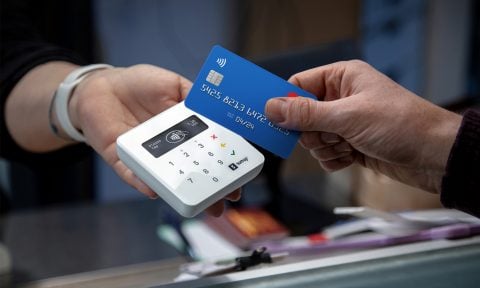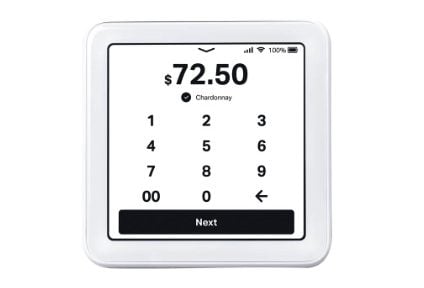SumUp Review 2025: Pros and Cons, Pricing, Alternatives
SumUp is a low-cost option for accepting payments in person, but online processing can be expensive.

Many, or all, of the products featured on this page are from our advertising partners who compensate us when you take certain actions on our website or click to take an action on their website. However, this does not influence our evaluations. Our opinions are our own. Here is a list of our partners and here's how we make money.
4.0
NerdWallet ratingSumUp gives users a simple, low-cost way to accept card payments. Its card reader options offer basic functionality for less than $100, and there are no monthly charges or contracts required to use them. Payment processing fees are:
2.6% plus 10 cents for in-person transactions.
2.90% plus 15 cents for online invoice transactions.
3.5% plus 15 cents for card-not-present transactions.
SumUp |
Compared to options that have feature-rich point-of-sale systems, such as Clover or Square, SumUp’s offerings are slightly more limited. However, not every business needs that extra horsepower; for small businesses that have straightforward payment needs, this could be a good right-size option.
Deciding factors
Payment processing fees |
|
Monthly fee |
|
Hardware cost |
|
Accepted payment methods | Visa, Mastercard, American Express, Discover, Diners Club, Google Pay and Apple Pay. |
Contract length | POS plans require a 12-month contract. |
Customer service |
|
Pros
Free POS plans for card readers.
Automated marketing tools for sending customers targeted promotions.
Available in more than 30 countries.
Cons
Online transaction rate is more expensive than some competitors.
POS system software requires 12-month contract.
How does SumUp work?
SumUp lets businesses accept card payments in person, through an online invoice, with payment links or over the phone.
The company’s three all-white readers with black-and-white displays are among the cheapest ways to start accepting in-person payments. The card readers alone don't require long-term contracts or a monthly fee.
SumUp also sells more robust POS system setups that require long-term contracts and a monthly subscription fee. One of the system's highlights is its built-in marketing tools, which are included in the Connect Plus and Connect Pro plans.
In addition to in-person payments, you can use SumUp to send online invoices to customers. You’ll also have access to payment links and a virtual terminal that lets you accept over-the-phone ("manually keyed") payments.
How much does SumUp cost?
SumUp monthly costs
$0 if using card readers only.
$99 for Connect Lite POS plan.
$199 for Connect Plus POS plan.
$289 for Connect Pro POS plan.
SumUp payment processing costs
2.6% plus 10 cents for in-person transactions.
2.90% plus 15 cents for online invoice transactions.
3.5% plus 15 cents for card-not-present transactions.
SumUp hardware cost
$54 for SumUp Plus card reader.
$64 for SumUp Plus cradle bundle.
$99 for SumUp Solo touchscreen.
$169 for SumUp Solo Printer Bundle.
SumUp POS bundle is quote-based.
For a basic option: SumUp Plus

This device isn’t much bigger than the cards it accepts. Its low-fi screen displays only the payment type and the total. One notable advantage is its ability to accept swiped, dipped or tapped cards — similar competing card readers are often more expensive. To use the Plus, you’ll need to pair with the SumUp app on a phone or tablet. You can also buy the card reader and cradle as a bundle, so you can accept payments while the device stays charging in the cradle.
For more customer interaction: SumUp Solo

The Solo is the company’s only card reader with a touchscreen, but it still exudes SumUp’s no-frills aesthetic: The display is monochrome. You can prompt customers for tips or send digital receipts from the card reader — things you can’t do with the other two. The Solo accepts dipped and tapped cards, but not swiped. All SumUp devices can connect to Bluetooth printers or printers that connect to Google Cloud Print.
SumUp pros
Free POS plans for card readers
SumUp’s low prices are its primary competitive advantage. If you're just using a card reader, there are no monthly subscription costs or long-term contracts. Plus, unlike some other competitors' hardware options, SumUp's card readers have screens that let customers know how much they owe. Another one of its card readers comes with a built-in receipt printer.
Automated marketing tools
SumUp's Connect Plus and Connect Pro POS plans come with automated marketing tools that can help you expand your business's reach and build a stronger customer base. The software sends targeted promotions to customers for you.
SumUp |
SumUp cons
POS systems require long-term contracts
SumUp is a solid solution for mobile businesses and pop-up shops that only need a card reader. The company's POS system options are competitive in terms of features, but unlike Square's month-to-month subscriptions, they come with a 12-month contract.
Online payment processing can be expensive
SumUp isn't the best option for businesses that process more than a handful of online sales each month. It charges 3.5% plus 15 cents per online transaction, which is more expensive than some competitors' standard 2.9% plus 30 cents rate.
SumUp alternatives
PayPal Zettle: Simple and low cost
Payment processing fees:
2.29% plus 9 cents for in-person and QR code transactions.
3.49% plus 9 cents for manual-entry card transactions.
2.99% plus 49 cents for invoicing (payment made with card).
3.49% plus 49 cents for invoicing (payment made with PayPal).
Why we like it: The Zettle card reader has a similar pocket calculator vibe and price point. PayPal Zettle also has a traditional desktop terminal and a POS system. This option, which is owned by online payments giant PayPal, might be a good match if you also sell online.
Square: Good for growing businesses
Payment processing fees:
$0 for Square POS, Restaurant, Retail and Appointments Free plans.
$29 for Square Appointments Plus plan.
$69 for Square Appointments Premium and Square Restaurants Plus plans.
$89 for Square Retail Plus plan.
$165 for Square Restaurant Premium plan.
Custom pricing for Square Retail plan.
Why we like it: You can start accepting payments with Square for less than $50 in hardware costs, have a $0 monthly payment, avoid a long-term commitment and pay low payment processing costs. However, compared to SumUp, Square’s POS system gives you more tools off the bat, like better reporting tools, as well as a system that can grow with your company. Some features cost extra, such as the customer loyalty program.
FEATURED




